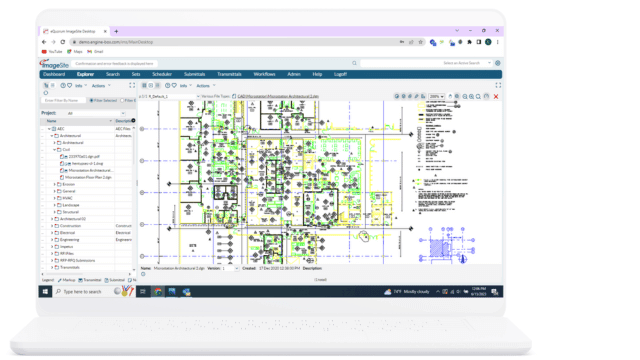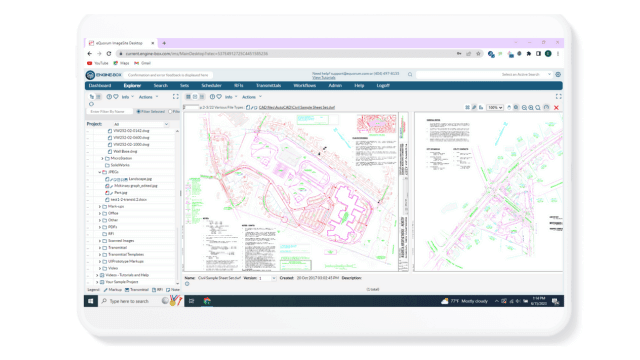How To Compete With Larger Engineering Firms as a Small Business Owner
How To Compete With Larger Engineering Firms as a Small Business Owner
Managing a small engineering firm can be challenging in and of itself. Smaller firms often must compete with the practices of larger engineering companies who appear to have unlimited resources, and may typically struggle with the intricacies of operational and financial management. This seems daunting to most managers; however, it should not discourage you from reaching your company’s goals.
In this blog, we will discuss some of the advantages and disadvantages of managing a small firm, and how you can adapt to successfully compete with larger engineering firms. Let's take a closer look at the following:
Being small isn’t bad
For the sake of argument, I will categorize engineering companies with fewer than 100 employees as small firms. There is no doubt that small firms have an uphill fight to compete with larger enterprises. It is often tough to compete with the speed and efficiency in which projects are completed at larger firms.
There are some advantages, however, to being smaller. Due to the large volume of customers, clients dealing with large businesses must also deal with large, non-responsive corporate bureaucracies.
Conversely, small companies can maintain a reputation for quality work and customer service, generating repeat business from loyal customers. Since small companies have more at stake when it comes to maintaining quality customer relationships, smaller firms need to gear towards providing personalized relationships and service.
The battle for human resources
Another challenge these companies face stems from the ongoing battle for human resources. Staffing is frequently difficult for small firms since large companies often offer competitive salaries and benefits that are difficult or impossible to match.
So how do these small companies attract and hold on to their employees?
One advantage of a small company is the greater diversity of projects. Project variety gives employees the chance to expand their personal knowledge and improve their skillsets while completing more varied types of work, which can be advantageous in terms of professional development and ultimately career advancement.
A study conducted by Udemy found that 42 percent of employees said learning and development were more important than other benefits when deciding where to work since employees believe they can leverage their skills to their advantage in future salary and benefit negotiations.
In addition, employees feel professional development provides them with additional motivation and energy to complete tasks and causes more satisfaction and happiness at the end of each day or week.
Smaller companies have the advantage of being able to more easily recognize the accomplishments of their employee, something often uncharacteristic of larger companies. A study by Gallup confirmed that roughly 40 percent of American workers said they would put more energy into their work if they received recognition more often.
If you are managing a smaller business, highlighting the accomplishments provides huge intangible benefits employees want to receive when working for your company.
Making the right financial decisions
Smaller business owners often see sales growth as the solution to its problems, as growth is commonly viewed in the battle to increase sales. Many smaller firms believe new product development is the driver to revenue growth since traditional accounting models tend to encourage the belief that higher profits follow sales. This is not always the case.
Given the limited resources of smaller engineering firms, many firms struggle to perform an adequate cost/benefit analysis. Cost accounting is an inexact study with limited goals and is a way for companies to look at direct costs as specific activities. Failing to accurately incorporate all related costs leaves firms unaware of possible losses incurred by adding new products or services. For this reason, it is important to understand what new products and features make sense in terms of long-term profitability and limit the pace of new product development to those efforts.
Using the right tools
There is a lot of buzz around DMS and ECM software these days, as they allow companies to increase efficiency and manage business processes while reducing errors. With limited capital, smaller businesses may feel they can’t realize returns on their investments quickly enough, however, this is not usually the case.
Often firms are caught up with tangible benefits and their effect on their bottom line but don’t assess the added benefits of improved systems and general employee satisfaction. While DMS’s reduce costs and offer tangible ROI through increased efficiency, it also provides firms with the tools they need to complete tasks that may be difficult, often fall through the cracks, or are otherwise impossible for small teams.
A well-designed DMS can provide users with the freedom and time to manage projects without having to spend large amounts of time focusing on the small details associated with project completion. It can automate important business processes and even create audit trails for actions associated with specific projects to be analyzed for business process improvement.
Smaller firms can adopt many similar systems as larger companies, just finding less expensive and more implementable versions (e.g., DMS and ERP systems). Larger firms will continue to automate business processes to get an edge over their competition, leaving smaller firms that don’t innovate or update running after the larger enterprises.
What software should I use?
Depending on the needs of your firm, we recommend using ImageSite or EngineBox.com as your document management system (DMS). ImageSite is an on-premise document management solution designed with the needs of engineers in mind. Unlike traditional document management software, ImageSite provides engineering firms with the tools required to manage document-centric workflows and can increase efficiency, thus improving ROI, without the need to deploy any software.
ImageSite is also designed for integration with the popular CAD software applications, including AutoCAD, Inventor, MicroStation, Revit, NX, and SolidWorks, making it easy for engineers to access CAD drawings without expensive CAD software licenses. And, with advanced security and control over file distribution, users can ensure the safety of proprietary documents, while also improving project completion time and quality of work.
When it comes to managing a team of telecommuters, EngineBox.com may be a more suitable solution for your business. EngineBox is eQuorum’s Cloud-based version of ImageSite and is subscription-based so you only pay for what your business needs. We know managing a smaller firm has its challenges, but with the proper tools and persistence, even small companies can compete with the giants of the modern corporate world.
Additional EDMS Features
Our EDMS solutions
ImageSite and EngineBox are eQuorum’s robust workflow and document management solutions, created to help workers manage their essential workflows while maintaining complete control over their engineering files and documents. Not only do they provide a secure collaboration site for workers, but they also help organizations manage document distribution with third parties like vendors, contractors, and customers. Both systems are offered at a competitive price, enabling organizations to get a quick return on their investment by providing the features and functionality needed to help organizations improve efficiency, productivity, and collaboration. Companies can choose from concurrent user subscriptions or named user subscriptions, ensuring organizations have subscription options that make sense for their business.

ImageSite®
Our single source engineering workflow and document management system. Built in HTML5 so there is no software to deploy to client computers or mobile apps to download. Offered as an On-premise or Private Cloud system.
EngineBox™
EngineBox is a cloud based workflow and document management version of ImageSite that resides outside the corporate network.
Our EDMS solutions
ImageSite and EngineBox are eQuorum’s robust workflow and document management solutions, created to help workers manage their essential workflows while maintaining complete control over their engineering files and documents. Not only do they provide a secure collaboration site for workers, but they also help organizations manage document distribution with third parties like vendors, contractors, and customers. Both systems are offered at a competitive price, enabling organizations to get a quick return on their investment by providing the features and functionality needed to help organizations improve efficiency, productivity, and collaboration. Companies can choose from concurrent user subscriptions or named user subscriptions, ensuring organizations have subscription options that make sense for their business.

EngineBox™
EngineBox is a cloud based workflow and document management version of ImageSite that resides outside the corporate network.
The eQuorum Customer Promise
In 2005, eQuorum developed the first all browser-based EDMS. The system, although for on-premise use, was still created to remove client software and JAVA from user computers and allow users to have a single viewer based on the simple navigation functionality of browsers. Today, eQuorum provides that same application in a private Cloud or a SaaS Cloud option. We can do this because we are, and have always been, browser-based, understanding the enhanced speed, security, and usability of this technology.
With the abundance of document management systems on the market today, there’s no doubt that choosing the right Cloud document management software can be a difficult decision. eQuorum is here to provide a comprehensive, powerful, and most importantly – affordable Cloud document management solution. We believe in providing real value to our customers by eliminating unnecessary costs, providing industry-leading functionality, and equipping your team with the right tools using cutting edge technology to bring your products to market faster.
eQuorum®
We specialize in engineering workflow and document management. Our comprehensive, yet easy-to-use software provides the solution to manage data from design to manufacturing and production, to sales, support and administration.